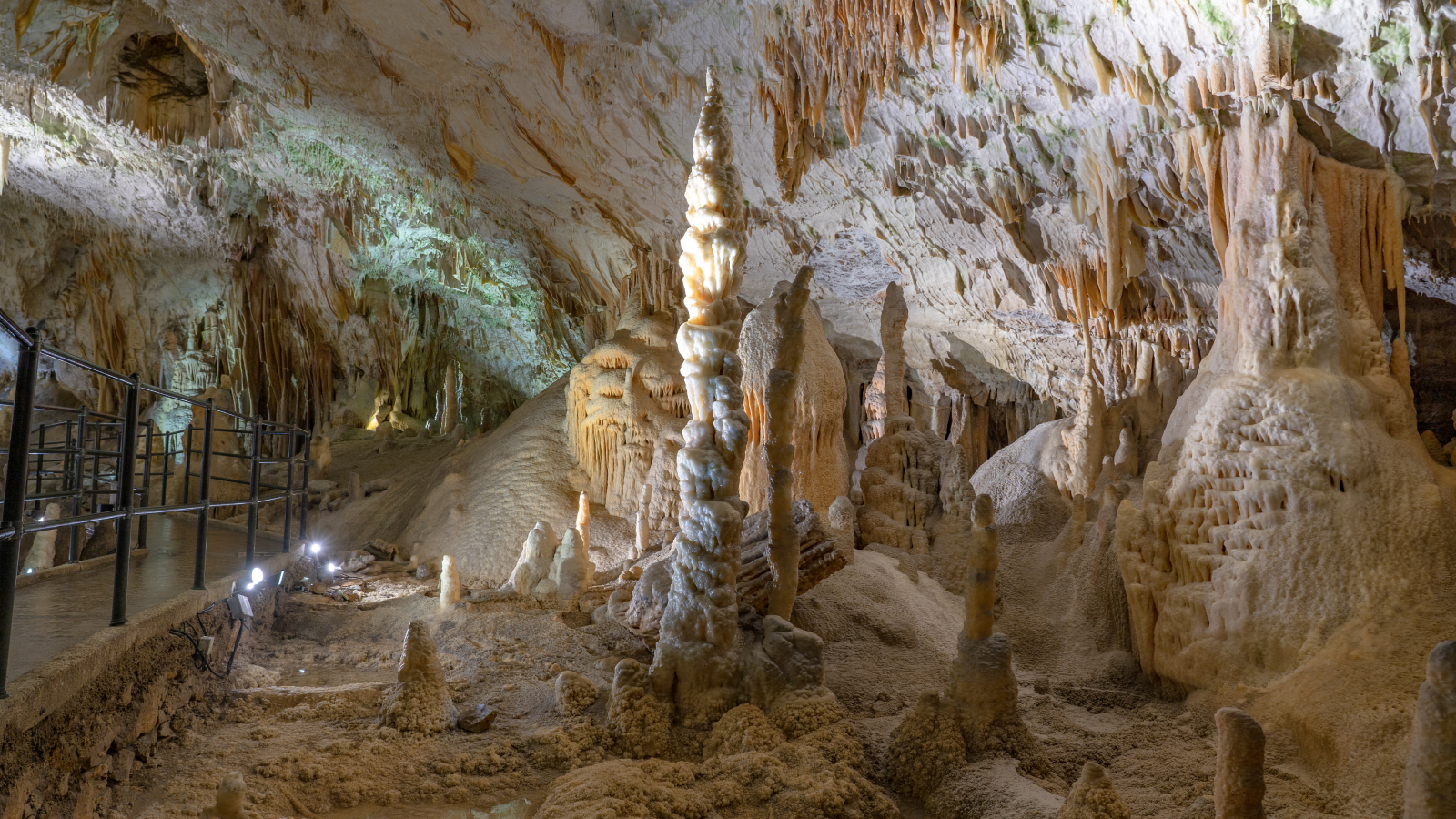Stalagmites adhere to a single mathematical rule, scientists discover
Scientists discover all stalagmites growing from cave floors follow a mathematical rule that explains how these mineral formations develop into different shapes.

Stalagmites all adhere to a mathematical rule, scientists have discovered after creating equations showing how the dramatic mineral formations develop into different shapes.
The new mathematical descriptions could help scientists extract more accurate data about past climate conditions, the researchers noted in a study to be published the week of Oct. 13 in the journal PNAS.
"It turns out that the rich diversity of stalagmite shapes can be explained by one simple parameter," study co-author Piotr Szymczak, a physicist at the University of Warsaw, said in a statement. "This is a rare case where the beauty we see in nature corresponds directly to a clean mathematical law."
Stalagmites can grow up to hundreds of feet tall from cave floors and take many different shapes — from sharp, narrow cones to wide, flat-topped mounds. They're created when mineral-rich water drips from the ceiling of a cave onto roughly the same spot for thousands of years, where it steadily deposits calcite in a tower growing from the cave floor.
In the new study, Szymczak and his colleagues developed a set of mathematical equations that describes how all of these shapes come to be. They found that the shape a stalagmite eventually adopts is controlled by the rate at which water drips from the cave's ceiling onto the stalagmite, and how quickly the calcite in that water gets left behind. These can be represented by a single value called the Damköhler number.
Fast-flowing water dripping from a cave ceiling tends to create pointy, cone-shaped stalagmites, while water that drips more slowly onto the same spot forms thicker, column-like stalagmites. When the water drips down from a great height, or doesn't drip in exactly the same place, wide stalagmites with flat tops can form.
The scientists then validated their equations by comparing the expected shapes of stalagmites under different conditions to actual stalagmites taken from Postojna Cave in Slovenia.
Get the world’s most fascinating discoveries delivered straight to your inbox.
"When we compared our analytic solutions with real cave samples, the match was remarkable," study co-author Matej Lipar, a physical geographer at the Research Centre of the Slovenian Academy of Sciences and Arts, said in the statement. "It shows that even under natural, messy conditions, the underlying geometry is there."
Scientists could use this geometry to get more accurate data about past climate from the formations, the authors wrote in the study. Much like tree rings, stalagmites grow in layers, recording information about rainfall and temperature over time. Scientists use the ratios of different forms, or isotopes, of carbon in each layer to extract that information. The stalagmites' shape affects how those layers are deposited, which could in turn affect how scientists interpret the conditions under which they grew.
"Stalagmites are natural climate archives, but we now see that their geometry leaves its own imprint on the isotopic record," study co-author Anthony Ladd, a chemical engineer at the University of Florida, said in the statement. "Recognizing this effect will allow us to extract more reliable information about past climates."

Skyler Ware is a freelance science journalist covering chemistry, biology, paleontology and Earth science. She was a 2023 AAAS Mass Media Science and Engineering Fellow at Science News. Her work has also appeared in Science News Explores, ZME Science and Chembites, among others. Skyler has a Ph.D. in chemistry from Caltech.
You must confirm your public display name before commenting
Please logout and then login again, you will then be prompted to enter your display name.
